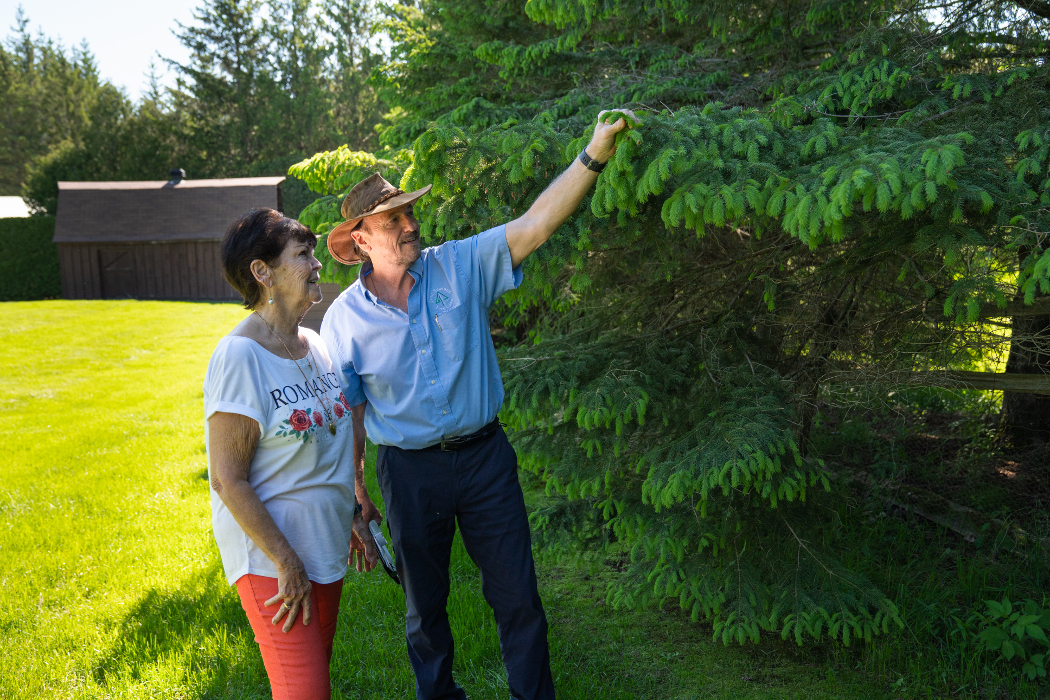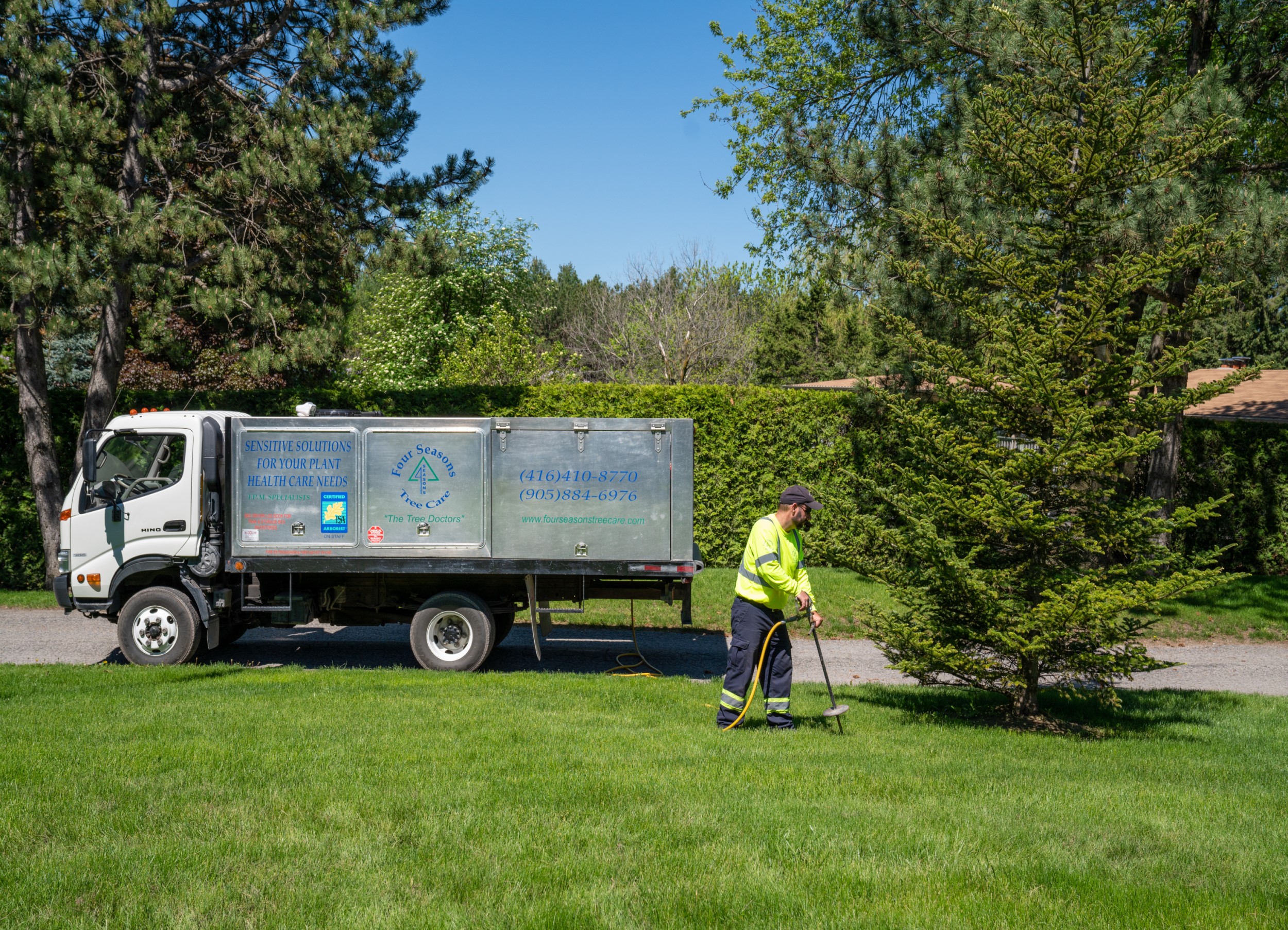
Take the time to look at your trees close up and from far away. Look at them as individuals and as a group. Look up and look down. If you see anything that causes concern call your arborist at Four Seasons Tree Care.
The best way to a healthy landscape is to be proactive and preventative. Monitoring on a regular basis throughout the growing season by a knowledgeable, experienced Arborist with a keen eye will help to minimize potential threats to the health and safety of your trees and shrubs. Trees that are stressed or in decline or perhaps have died are usually suffering from a combination of factors. Insects and diseases are often secondary, as they prefer to attack weakened trees.
A Plant Health Care Program that includes monitoring with treatments as required can be set up through Four Seasons Tree Care, ensuring that a qualified Arborist is on your property several times throughout the growing season. This helps to keep insects or diseases at a tolerable level and reduce the use of pesticides. Consideration is given to several control options using an Integrated Pest Management system to develop, restore, preserve or augment natural checks and balances. Recognizing beneficial pest organisms is a crucial element in this process. Early and correct diagnosis of a disorder can make the difference between a healthy landscape and a happy homeowner or a dead tree.
Environmental stressors and climatic conditions can weaken trees and shrubs making them more susceptible to insect and disease attack. Not all disorders are infectious. Physiological disorders account for a large percentage of declining trees. The Arborists at Four Seasons Tree Care will make recommendations to improve the site conditions for your trees and shrubs. These options may include soil amendments, fertilizing, pruning, planting the right tree in the right place and sometimes even removals.
Improving the overall health and safety of your trees and shrubs is a top priority for our Arborists.


